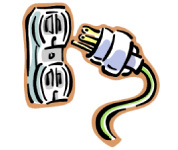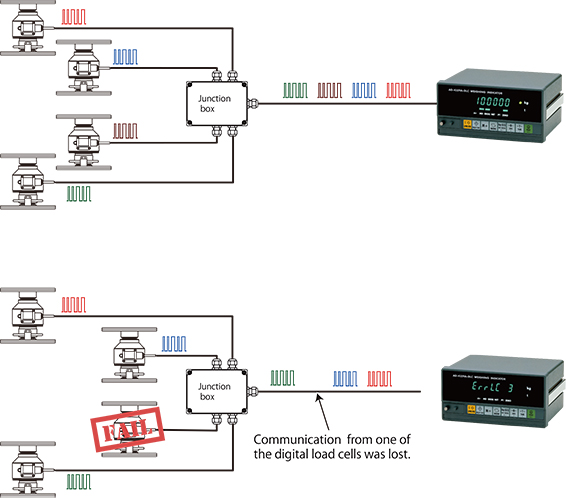Customers often ask me, “For the applied voltage of load cells, the higher the better, right?” These customers usually have an understanding of electricity and logically point out that, “If the applied voltage of the load cell is doubled, the output voltage doubles proportionally. This in turn will increase the signal/noise ratio and reduce the variation of the indicator value by half”.
Well, another tricky question, I always think. That’s because when I explain my answer, customers often tell me that they are confused. What the customers are saying is definitely correct in principle. However, there’s a reason why it doesn’t tell the whole story for load cells.
Let’s look at a question about Ohm’s Law.
Q: If 5 V and 10 V are applied to a resistance of 100 Ω, what are the respective power levels?
A: P (power) = V2/R
For 5 V, 5*5/100 = 0.25 W
For 10 V, 10*10/100 = 1 W

We can see that power increases in proportion to the square of the applied voltage.
In other words, doubling the applied voltage quadruples the heat generated.
That’s why all manufacturers regulate the maximum applied voltage of their load cells.
If the applied voltage exceeds this limit, combustion may occur.

Furthermore, temperature increases caused by the dissipated power create a temperature difference between the load cell and ambient air. This causes convection, which is like the steam slowly rising from a hot cup of coffee. The convection causes ripples in the surface temperature of the load cell, which causes the surface material of load cell (aluminum, steel, etc.) to expand and contract. This is detected by the strain gauge and causes the indicator value to fluctuate. What’s more, when a lot of heat is generated, even a small amount of air from outside the instrument may also cause irregularities in the surface temperature of the load cell, which may also cause the indicator value to fluctuate.

So this leads to another difficult question: “So that means the lower the applied voltage of the load cell, the better?” Actually, when the applied voltage of the load cell is small, the output power is lower, which makes the load cell more likely to be affected by disturbances such as ambient noise. This leads to the question, “So, which is it?” Even if the applied voltage is low and the noise ratio increases, it’s OK as long as you use a filter that can eliminate as much noise as possible. This means that even if the applied voltage is halved and the noise ratio is doubled, it’s better to increase the performance of the noise-eliminating filter by 2 times or more.

That’s why A&D lowered the applied voltage to 5 V for the load cells in their new weighing indicators. And lower power consumption is more environmentally friendly, right?




